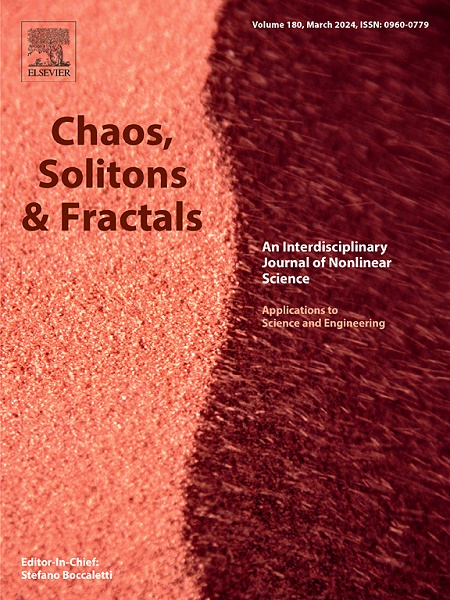Dynamical modeling reveals the pivotal regulatory role of direct glutamatergic subthalamic-striatal projections in modulating basal ganglia activity during absence epilepsy
IF 5.6
1区 数学
Q1 MATHEMATICS, INTERDISCIPLINARY APPLICATIONS
引用次数: 0
Abstract
Increasing anatomical evidence suggests the existence of direct glutamatergic projections originating from the subthalamic nucleus (STN) to the striatum. However, due to the complex structure of the striatum, unraveling the impact of these subthalamostriatal projections on the functionality of the basal ganglia remains a critical and urgent task. In this paper, we conduct a comprehensive investigation into the potential role of subthalamostriatal projections in regulating absence epilepsy (AE) within a dynamic computational framework. Our findings reveal that, when the subthalamostriatal projections are disconnected within the model, the striatal output exhibits no notable regulatory influence on AE. Interestingly, the subthalamostriatal projections play a significant role in managing AE. Moreover, the directly striatum-connected pathways, which significantly influence striatal output, actively participate in the control of AE through modulation by the subthalamostriatal projections. And, the control effects of other indirectly striatum-connected basal ganglia pathways on AE are significantly influenced by the subthalamostriatal projections. Furthermore, the biologically plausible range of coupling weights on subthalamostriatal projections can be effectively estimated within the model. Crucially, our analysis indicates that striatal-related pathways regulate AE by significantly influencing the activation levels of basal ganglia nuclei. The striatal nuclei exhibit distinct high and low triggering average discharge rates, thus making it a potential effective target for clinical treatment of AE. Taking AE as an exemplar, we underscore the pivotal and non-negligible role played by subthalamostriatal projections in modulating basal ganglia functionality, potentially serving as a source of inspiration for future experimental research endeavors.
动力学模型揭示了谷氨酸能直接丘脑下纹状体投射在缺席癫痫期间调节基底神经节活动中的关键调节作用
越来越多的解剖学证据表明,存在从丘脑下核(STN)到纹状体的直接谷氨酸能投射。然而,由于纹状体的复杂结构,揭示这些丘脑下纹状体投射对基底神经节功能的影响仍然是一个关键和紧迫的任务。在本文中,我们在动态计算框架内对丘脑下纹状体投射在调节缺失癫痫(AE)中的潜在作用进行了全面的研究。我们的研究结果表明,当在模型中断开丘脑下纹状体投射时,纹状体输出对AE没有显着的调节影响。有趣的是,丘脑下纹状体投射在AE的治疗中起着重要作用。纹状体直接连接通路通过丘脑下纹状体投射调节,积极参与声发射的控制,显著影响纹状体输出。其他间接纹状体连接的基底神经节通路对AE的控制作用也受丘脑下纹状体投射的显著影响。此外,丘脑下纹状体投射的耦合权重的生物学合理范围可以在模型内有效地估计。至关重要的是,我们的分析表明纹状体相关通路通过显著影响基底神经节核的激活水平来调节AE。纹状体核具有明显的高、低触发平均放电率,是临床治疗AE的潜在有效靶点。以声发射为例,我们强调了丘脑下纹状体投射在调节基底神经节功能方面的关键和不可忽视的作用,可能为未来的实验研究提供灵感。
本文章由计算机程序翻译,如有差异,请以英文原文为准。
求助全文
约1分钟内获得全文
求助全文
来源期刊

Chaos Solitons & Fractals
物理-数学跨学科应用
CiteScore
13.20
自引率
10.30%
发文量
1087
审稿时长
9 months
期刊介绍:
Chaos, Solitons & Fractals strives to establish itself as a premier journal in the interdisciplinary realm of Nonlinear Science, Non-equilibrium, and Complex Phenomena. It welcomes submissions covering a broad spectrum of topics within this field, including dynamics, non-equilibrium processes in physics, chemistry, and geophysics, complex matter and networks, mathematical models, computational biology, applications to quantum and mesoscopic phenomena, fluctuations and random processes, self-organization, and social phenomena.
 求助内容:
求助内容: 应助结果提醒方式:
应助结果提醒方式:


